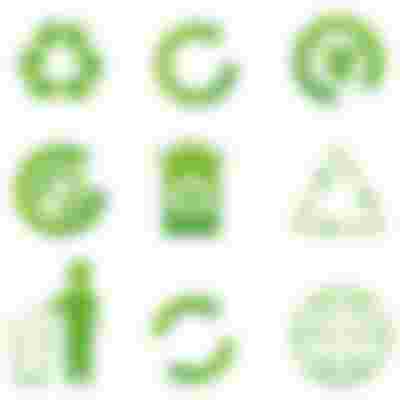What is Recycling? Learn About Recycling
In many parts of the world, recycling has become a way of life for citizens that wish to live in an environmentally friendly manner and communities trying to save landfill space, protect the environment, and conserve their resources. Recycling has become so ubiquitous that many people do not consider what is recycling and what the recycling process is for the various materials that they routinely recycle.
The short answer is that the materials that are picked up at the curb or dropped off at a recycling center are sorted, cleaned, broken down, and reprocessed into a wide variety consumer products and feedstocks for building materials. Many people understand this high level explanation of the recycling process, but do not know how recyclables, such as plastic bottles, newspaper, waste paper, and aluminum cans, are actually recycled and processed into new finished products and building material feedstocks.

An Overview of The Recycling Process
While the process of recycling particular materials is quite specific to the material being recycled, the overall recycling process can be explained in broad terms. Consumers collect their recyclables and either put them out at the curb for pickup or drop them off at a local recycling center. This initial step often involves basic sorting of materials to one degree or another, depending on the local recycling rules, as consumers separate materials into categories, such as: newspaper, waste paper, cardboard, plastic bottles, aluminum cans, glass bottles. Some localities have implemented single-stream recycling, which allows consumers to throw all recyclable materials into a single recycling container that are later sorted and separated by sophisticated recycling equipment.
Whether pre-sorted or single-stream, the materials are sent to large recycling facilities, known as Materials Recovery Facilities, that further sort the vast quantities of recyclable materials sent to them each day into subcategories of materials that are sold to reprocessing facilities which are capable of turning specific recycled materials into either finished products that can be sold to consumers or into feedstocks that can be sold to commercial or industrial users.
How Plastic Bottles Are Recycled
Plastic bottles are sorted into the types of plastics that they are made of, since different types of plastics are recycled into different end products. You probably have noticed that plastic bottles are stamped with a recycling symbol that has a number and a letter code inside of it, with the numbers ranging from 1 to 7. This is known as the Plastic Identification Code (PIC). Modern plastic recycling processing centers use sophisticated computers and mechanical sorting systems to quickly scan thousands of plastic bottles per hour with infrared scanners that are able to determine which type of plastic a bottle contains and their color. Once sorted by their Plastic Identification Code and color, plastic bottles then crushed and bound together into large bales.
The bales of plastic bottles are purchased by companies that run plastic reclamation facilities, where the bottles are washed, grinded into small pieces, and then dried. The small pieces of plastic that were once plastic bottles are now ready for a step in the recycling process called melt filtration, which is a process in which the plastic pieces are heated, melted, and filtered through screens to create plastic resin pellets or blow-molded bottles. The plastic resin pellets and blow-molded bottles are then sold to manufactures that use them to produce finish plastic products that can include, but are not limited to: plastic bottles, composite building materials, plastic toys, and even clothing that is made from plastic fibers.
The Paper Recycling Process
Post-consumer waste paper recycling programs have been very successful with well over 50% of all paper products in the United States recovered and recycled into new paper products. Waste paper includes a wide variety paper products from high quality and high value white office paper to low quality and lower value junk mail and paper scraps to newspaper.
Paper is either sent to Material Recovery Facilities as consumer separated paper products or as part of comingled single-stream loads. In the case of single-stream loads, the paper is sorted at Material Recovery Facilities to segregate the various types of paper into similar grades for further processing. Once properly sorted, paper is combed to remove non-paper materials and is then bound into large bales that are sold to paper mills that are designed to process post-consumer paper materials and recycle them into new paper products.
At paper mills, the feedstocks of various waste paper grades are processed separately to make new paper products. First, the paper is mixed with water and chemicals, and is then heated and chopped to break it down to thin strands of cellulose fibers (which originate from the trees and plants that the paper was initially created from). The final mixture of cellulose fibers is called pulp, which is further processed to remove glues, plastics, and inks that may still be present in the pulp. The final step involves bleaching the pulp and adding water, at which point the pulp is ready to be made into new paper products.

Recycling Used Aluminum Cans Into New Aluminum Cans
After collection and sorting at Material Recovery Facilities, aluminum cans can crushed into either bricks or bales, which are then sold to aluminum smelting companies that are capable of recycling used aluminum cans into new ones. Aluminum smelters shred and crush the cans and then remove any inks and coatings that are present from prior can packaging by heating the shreds of aluminum into molten (liquid) aluminum, which burns off the inks and coatings. The molten aluminum is cooled into large ingots that are sold to companies that manufacture consumer goods made from aluminum, such as aluminum cans and aluminum packaging.
How Much Energy Does Recycling Save
Now that you understand the recycling process it is important to also understand the benefits of recycling, which not only keeps a great amount of waste materials out of landfills, but also saves a lot of energy when compared to product manufacturing that uses virgin feedstocks. Since energy production is still overwhelmingly environmentally unfriendly, the energy saved by recycling waste materials into new materials, instead of using virgin feedstocks, provides great environmental benefits.
Here are some examples regarding how much energy is saved when some of the more common materials are recycled:
Aluminum cans made by recycling aluminum require only 5% of the energy that is required to make aluminum cans from bauxite ore mined from the Earth.
Plastic bottles made by recycling plastic require only 10% to 25% of the energy that is required to make plastic bottles from virgin plastics that are a product of petroleum feedstocks.
Paper made by recycling waste paper require only 60% of the energy that is required to make paper from virgin wood and plant .


Living on my plot of land with a large family, I often have a problem with garbage disposal, since it is collected a lot and often, therefore I was advised one cool service where people know how to cope with this task very quickly, and most importantly, qualitatively, it is enough just to try their work and you will also be pleasantly surprised, this https://www.rubbishwaste.co.uk/domestic-rubbish-clearance/ is a very useful service.